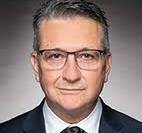Efforts to build a prairie port received a shot in the arm last week.
The Senate Standing Committee on Transport and Communications tabled a lengthy report on container ports and related trade route issues that included recommendations for government to provide funding and other assistance for inland terminal projects.
“An inland port is part of a new vision for the container system,” said committee chair Lise Bacon during a conference call with reporters.
That endorsement was music to the ears of Doug Campbell, chief executive officer of the Prairie-to-Ports Gateway and Inland Port. His group is attempting to build an inland port within a 300 kilometre radius of central and southern Saskatchewan.
Read Also

Going beyond “Resistant” on crop seed labels
Variety resistance is getting more specific on crop disease pathogens, but that information must be conveyed in a way that actually helps producers make rotation decisions.
Receiving such a ringing endorsement from a multi-party senate committee that devoted two years and 106 pages to the subject of container ports is an “extremely important” step in the long process of putting together such an ambitious project, said Campbell.
“It’s certainly a validation. It certainly says to Canadian investors, ‘hey, take a look.’ “
One of the report’s key recommendations is to provide increased funding for port, gateway and inland terminal projects to build sufficient capacity to handle future container growth.
“If we want to have a place in the world as a good container system, we’ll have to spend money,” said Bacon.
Another recommendation is for the government to establish inland free trade zones to attract investment and enhance the cost effectiveness of inland terminals.
Committee deputy chair Donald Oliver said that proposal came at the urging of a strong representation from Saskatchewan and Manitoba, which hope to establish inland ports in their respective provinces. He said it boils down to giving tax breaks and other assistance to attract businesses to set up shop in a prairie port environment.
“They would come because there would be less taxes to pay for doing work and services there. That’s the kind of hub that we would like to see developed in Western Canada.”
Campbell brought the mayors of Moose Jaw and Saskatoon to assist with the inland port presentations he made to the committee in March and November of 2007. He is pleased to see the suggestion for free trade zones made it into the senators’ report.
“That’s excellent,” he said.
It is a policy measure that would help attract distribution centres, assembly facilities and other port services to provide consumer goods to the Canadian prairie region and northern tier states.
More importantly, the Senate endorsement and the publicity it generates substantiates a project aimed at filling some of the 80 percent of containers that arrive empty at west coast ports for shipment to Asia and other destinations.
In their report, senators said Canada’s container transportation system needs a major overhaul that will require heavy investment of taxpayer dollars, better co-ordination of services and streamlined government policies.
“We need vision. We need to think big picture,” Bacon said during the news conference introducing the report.
It calls for improved service from railways, the rationalization of the patchwork of trucking regulations across the country, a plan to deal with labour shortages, updated port policies and improved infrastructure including more use of computer technology in the container transportation system.
“This is a national undertaking that requires a national vision,” Oliver said.
Pulse Canada was the only agricultural commodity group among the 115 witnesses that made presentations to the committee in the 36 meetings it held over the past two years. The pulse industry is recognized as the grain sector most heavily reliant on containerized shipments.
The organization is pleased with what it sees in the report.
“From a Pulse Canada perspective we couldn’t agree more. These types of findings and the recommendations that they’ve linked to them support a lot of the work that we’re already doing,” said Greg Cherewyk, director of transportation with the organization.
He was particularly happy with the committee’s call for improved rail service and infrastructure and the integration of information technology.
“In those three areas alone we’re finding support for what we’re doing, which I find very promising.”
Pulse Canada is one of many farm groups that pushed for amendments to the Canada Transportation Act and the recently launched rail freight service review. It is in the first phase of a pulse industry infrastructure needs assessment and will be launching a pilot program at the end of this month that will introduce new software to enhance communication between shippers and shipping lines.
Cherewyk also endorsed the committee’s recommendation to establish a National Gateway Council to bring together players in the container transportation system with governments across the country to enhance communications, bring efficiencies into the system and market the new system to the world.
“We don’t see a lot of that,” he said.
Bacon said there is substantial work to be done at all levels of government and the private sector to make Canada’s container system more competitive.
She mentioned a few times during the news conference that those changes will come at a hefty cost, but would position Canada as a major player in the global market for containerized goods.
“There is a lot of money involved in our report. I hope the federal government will be listening to what we’re saying.”
















